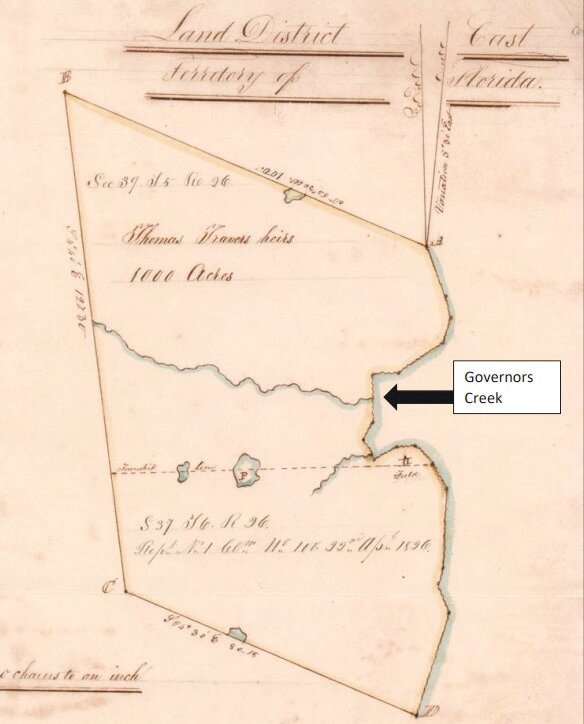Celebrating Clay County History
When Spain got “La Florida” back
Email: A service of Clerk of Court and Comptroller Tara S. Green
The year the U.S. Constitution was ratified, 1787, was a busy time for the Spanish in Florida. It had been four short …
This item is available in full to subscribers.
Attention subscribers
To continue reading, you will need to either log in to your subscriber account, below, or purchase a new subscription.
Please log in to continueDon't have an ID?Print subscribersIf you're a print subscriber, but do not yet have an online account, click here to create one. Non-subscribersClick here to see your options for subscribing. Single day passYou also have the option of purchasing 24 hours of access, for $1.00. Click here to purchase a single day pass. |
Celebrating Clay County History
When Spain got “La Florida” back
Email: A service of Clerk of Court and Comptroller Tara S. Green
The year the U.S. Constitution was ratified, 1787, was a busy time for the Spanish in Florida. It had been four short years since Spain regained control of La Florida from the British. Having lost the Revolutionary War, Britain was in no economic or political state to deal with Florida, often referred to as the 14th Colony.
Spain was eager to bring new colonists to St. Augustine and its surroundings. To make the colony profitable, Spain needed population growth. Citizens of that time were British Loyalists who stayed behind after the British left, i.e., the Minorcans, free Blacks, and enslaved Blacks. There were also those of Spanish descent, just not enough. The Spanish did not count the Native Americans.
New laws for “East Florida” enabled generous land grants. The terms declared that each head of household would receive 100 acres with an additional 50 acres for each household member, and this included both free and enslaved members. The 1,000 acres were also available if the settler would cultivate the land. They had to build adequate housing, keep livestock, and tend to the land for ten years. Settlers could not sell or dispose of the land during those ten years.
In the past, Spain required recipients to convert to Catholicism. This caused a big headache for Governor Zepedes. Many new colonists were Americans and British Loyalists who were Protestant and unwilling to convert. After much political maneuvering, a compromise was reached, and a conscious decision was made not to enforce this requirement. While the adult settlers failed to comply with the religious rule, they didn’t seem to mind when it came time to baptize their children Catholics. Prospective landowners were required to swear allegiance to Spain and become Spanish subjects.
Spain, who had a poor relationship with the Native Americans, did not extend these generous offers to that population. This poor relationship ended up causing real trouble later, as the Native Americans conducted raids against the settlers and made the rural grant locations dangerous places to be.
Here in Clay County, one of the earliest grants was given to Dr. Thomas Travers.
Dr. Travers, a native of County Kildare, Ireland, had been stationed in East Florida as an army surgeon under the British. He stayed behind when the British left. He was a contemporary of George Fleming, Philip Fatio, and Zephaniah Kingsley, all recognizable names in Clay County to this day. His home in St. Augustine was on Hospital (now Aviles) Street. He served as the Spanish government’s Royal Doctor, and his service earned him several large land grants.
Travers’ Clay County grant was for 1,000 acres, covering the area known as Magnolia. Magnolia was just on the north side of Governors Creek, where the St. Johns Landing Apartments are located today in Green Cove Springs. This grant was in the same place as where Governor Patrick Tonyn’s British land grant had been.
Dr. Travers called it “Santo Tomaso” after himself. Dr. Travers’ Spanish friend Mathew Solana named his land grant after himself, too, and we now have San Mateo.
Dr. Travers’ wife, Maria Fitzgerald, was also from Ireland. They had three children: William, Maria and Margarita Maria Salome. All three were baptized Catholic. Dr. Travers died in 1807, and Ana Saunders, his second wife, was made executrix of his estate. Dr. Travers is buried in Tolomato Cemetery in St. Augustine.
As heir to the Travers grant, William renamed the plantation “Constancia” after his daughter and made many improvements. William ran a sugar plantation and partnered with Mathew Solana on a sawmill. He built a home there, as well as outlying buildings.
Later, once Florida was a U.S. territory, the Black Creek District (modern-day Clay County) began to take off. Spanish land grants like Hibernia (Fleming’s Island) were thriving. Laurel Grove (Orange Park) was doing well, and other Spanish land grant holders, such as the Branning family, were making something of their land.
Unfortunately, the good times were not meant to last. The Seminole Wars were heating up, forcing many to seek shelter at Fort Heileman (Main Street Boat Ramp, Middleburg). Native American predation was rampant. Sadly, the Travers plantation was burned down by the Seminoles in 1840.







